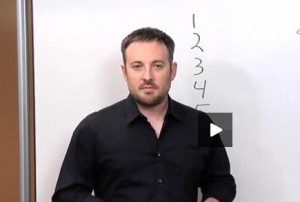
Let me start off by saying that the intent of this article is not to sell you life insurance but to show you the best financial instrument for wealth accumulation and to use the best tool out there with the most tax advantages.
Financial safety is critical along with that it is divers-ital in what it can do as your chosen financial instrument for wealth accumulation. You also want to minimize your tax burden. A very critical aspect to any financial instrument you take on is that there is no chance you will lose your money.
Here are the 10 criteria when deciding where to put your investment money.
- No chance of losing your investment money in a down market.
- Allows your money to grow tax-deferred.
- Option to withdraw money tax free.
- Getting a guaranteed annual rate of return.
- Fully locked up and protected from creditors.
- No limit on how much you can invest in the financial instrument.
- Extremely liquid. No rules, penalty, or restriction on getting access to your money.
- Option to use your money as collateral.
- Use your money at your discretion by your rules instead of the governments.
- No chance of your investments value going down.
In this litigious society having your money protected from lawsuits and creditors is key and this financial instrument we are talking about will allow you to do that. There are also all kinds of penalties and restrictions on most investments when getting access to your money but not with this instrument.
There are some deterrents when getting access to this money but this instrument is liquid in that you can get access to this money in at least 48 hours.
So what is this financial instrument? Some people call it the “bank of you”. Basically you are your own banker and refers to your financial position rather than an actual bank.
This instrument gives you access to your “bank” under your control.
A traditional bank must persuade people to put money in their bank by giving you access to the money conveniently and offer interest back to you for leaving it in there.
Banks make more interest then they pay. Banks don’t just let the money you give them sit there but actually keep that money moving and making money.
By you being the bank you can make interest on yourself which means while you invest money in opportunities you are not losing money on the other side by paying interest to a bank for that loan. Instead you can make money on the loans you take out as you are borrowing money from yourself.
The principal here is to not do what a bank tells you but do as a bank does. You will be far better off by being the bank.
 To be the bank you must put your money in the most efficient financial instrument that will act most closely like a bank.
To be the bank you must put your money in the most efficient financial instrument that will act most closely like a bank.
This type of system goes by the name “the bank of you” and “infinite banking”
One of the differences between this type of system and other investments is that you have access to it and it is tax free tax deferred and there is no limit to how much money you can put into this instrument.
Even if the interest on the investment is lower than other investments keep in mind you are no longer paying interest to a bank as all your loans are from yourself.
Looking at the overall picture if you add up the interest you are saving and the interest on your return in your financial instrument you will make much more money than having your money tied up in other sometimes more risky investments that are not as liquid.
What this strategy provides is:
- Income tax-free death benefit
- The possibility of tax-free income
- Access to financial benefits in case of illness
- Tax-deferred cash growth
The product is called SecurePlus Universal Life Provider Option B (Increasing)
Example issue at the age of 32
Here is the summary of values at the age of 60
Note: Think of the insurance policy as a bonus as we are using this mainly as a financial instrument to act as “the bank of you”
Life Insurance Annual Premium is $12,000
The Cash value accumulation is $913,507 or an annual tax-free income of $75,000 starting at the age of 60 that is payable for 40 years.
Plus you get a remaining death benefit after income distribution of $853,694
Or with the annual life insurance premium of $12,000 you get $1,268,906 income tax-free death benefit or accelerated benefits during lifetime such as $1,000,000 terminal illness or $13,459 chronic illness monthly benefit, or $1,000,000 critical life threatening illness benefit.
How it works
- At your death, the benefit is paid directly to your beneficiary, free of income taxes and without the publicity of probate.
- You may accelerate the death benefit during your lifetime to help cover cost associated with a terminal chronic or critical illness.
- Any remaining death benefit not accelerated during your lifetime is paid to your beneficiary income tax-free.
- Policy cash value grows income tax-deferred.
- Policy cash value may be accessed during lifetime to generate tax free income.
This type of financial instrument strategy to be your own bank has been used by many wealthy individuals from the past and even some now like Donald Trump.
Again this is not about life insurance but about using the right vehicle to provide to you all the benefts you need to maintain the lifestyle and growth in money that you want.
The trick to pull the money out of your life insurance policy while keeping it tax deferred and tax free is to take a loan out on the policy.
Because it is a loan this money never goes on your 1040.
Most insurance experts do not know how to structure insurance policies correctly. What ends up happening is they give you a lot of death benefit but no wealth accumulation when structuring your policy.
These concepts we are presenting here get really powerful because we are basically getting as little life insurance as possible while throwing a lot of money in there that you can borrow whenever you want.
This financial instrument allows you to build something similar to an annuity that you get tax free each year. The money left in there continues to compound because it is earning interest.
Whatever money is left in the account if you croke at 100 years of age your heirs get 100% tax free.
When setting up this type of policy you have to make sure it is setup correctly or you could create a qualified account that created a taxable event. This mistake is known as mecing the insurance policy.
To avoid this mistake it is worth sitting down with a financial planner who knows how to create these type of wealth strategies that will avoid this possibility.
The simplest solution is to take the path of least resistance which is to add more insurance than you really need to avoid mecing the policy. The problem is that the insurance agent is adding more cost than is neccessary.
The better way to add in insurance is to increase the insurance over time in an auto-pilot fashion so that it increases the cost over time. Many insurance agents do not understand how to set the policy up on auto pilot in this type of way and even those who do may not simply because they will make more money loading you up with insurance from the start.
These policies have a guaranteed rate of return of 2 % but typically you get around 5.9 %.
Keep in mind even though in other investment vehicles you might make higher returns you are taxed each year for these and sometimes there are management fees. Even with no load funds there are management fees to manage the portfolio. With IRA’s it is tax deferred but the management fee is 1%.
We are comparing the Secured Plus provider against these investments. You make $12,000 payments until age 60 with the Life Insurance policy. An IRA runs out at age 72. You will notice that with a CD you will run out of money in your 60’s. A municpal bond will run out at age 68. A 9% mutual fund will run out at age 70.
With the Secured Plus plan you are in the money until age 100 with the ability to pull out $75,000 per year at age 60 until age 100.
If you put in $5,000 a month you can pull out $13 million dollars from age 60 – to age 100 which is at a 5.9% interest rate.
This money can be past to your heirs tax free. A short mention about using an IRA in comparison is that you must start taking money out of that IRA at retirement age which is not the case with the SecuredPlan strategy.
The great thing about this for the short term is that you can borrow from yourself on this investment vehicle at anytime and it is tax free.
Unlike a traditional bank you can grow your money and borrow from it while paying yourself interest. This does not mean you do not have a traditional bank account but as far as where most of your wealth is held it should be in this type of investment vehicle.
Banking is a very lucrative business and they make money by moving it, all this strategy is showing you is how you can operate your income very similar to how a bank does.
In summary, the government can’t take this money, you do not have to pay taxes on it, offers security, retirement, something you can pass on to your heirs, and you can be more risky as a business owner and entrepreneur to get into the opportunities you want to get into.
This system allows you to pay yourself first which many business owners forget to do and end up having to start over in life from scratch after they loses it all. If you take a big hit on your finances you will still be able to sleep with this program and is foundational to your long term success with your finances.
To see if this financial plan is right for you I recommend speaking to a financial planner in the Tyler Texas area. Here are a few that I know of: Feliciano Financial and Achieve Financial

 This strategy I like to call Integrated Cash System. I think this strategy will be unbelievably valuable to you as it has been for me.
This strategy I like to call Integrated Cash System. I think this strategy will be unbelievably valuable to you as it has been for me.
 Like a huge percent of the population, a few years ago, I found myself in a fairly steep financial hole. After a major cross country move and a period of Job hunting I found that my credit card debt as ballooning. Every month I was robbing from Peter to pay Paul. Even making the minimum payments was giving me an ulcer. Finally, after realizing that I was never going to pay my way out I decided to look around for some creative solutions.
Like a huge percent of the population, a few years ago, I found myself in a fairly steep financial hole. After a major cross country move and a period of Job hunting I found that my credit card debt as ballooning. Every month I was robbing from Peter to pay Paul. Even making the minimum payments was giving me an ulcer. Finally, after realizing that I was never going to pay my way out I decided to look around for some creative solutions.